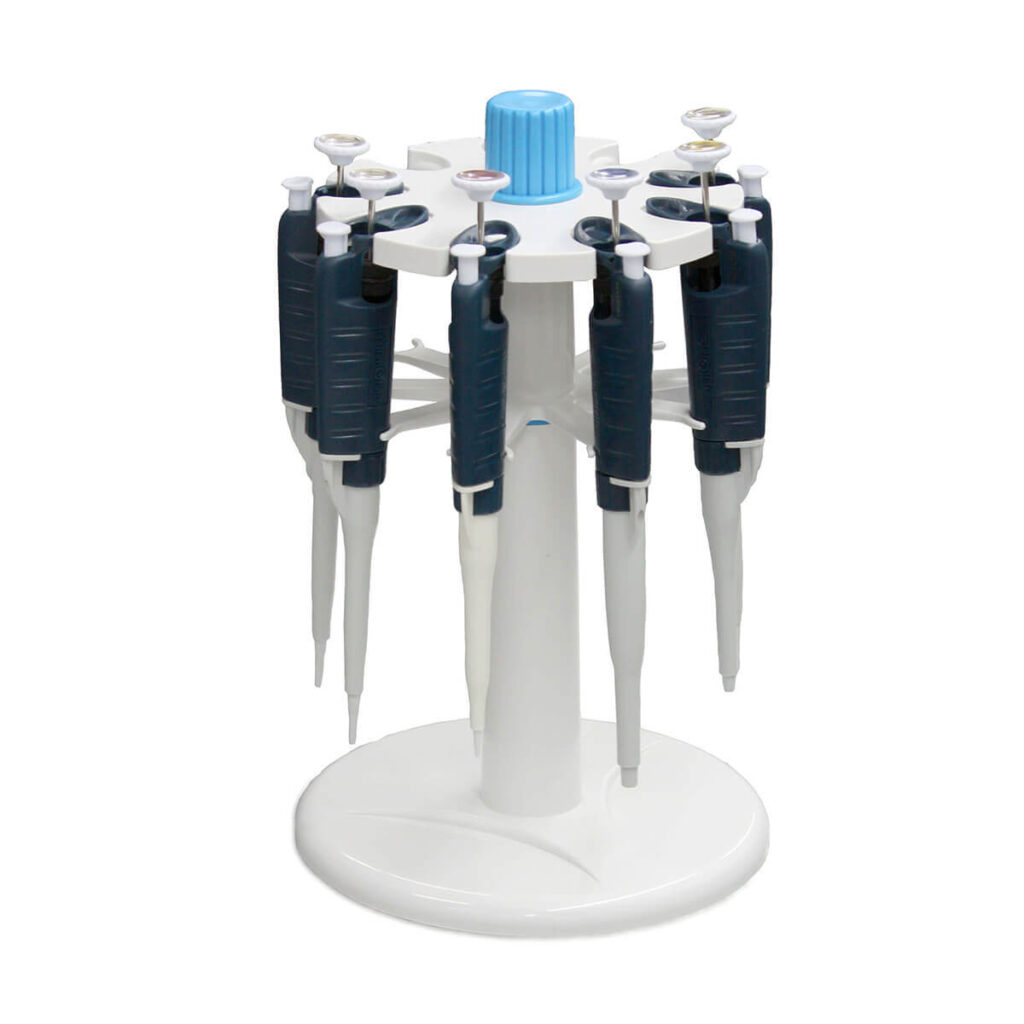Micropipettes are small, portable devices that can be used to measure and transfer small amounts of liquid. They are often used in laboratories to transfer small volumes of liquids, such as DNA, RNA and blood samples. As micropipettes are increasingly used in blood analysis, it is important to understand how they work and how they can be used effectively.
Micropipettes are an essential tool in blood analysis and play a vital role in ensuring accurate results. By understanding how they work and using them correctly, you can ensure that your blood samples are accurately measured and transferred.
At Kalstein, we have micropipettes designed to take samples in microliters, highly resistant and ideal for special laboratory analysis.
Micropipette functions
Micropipettes work by aspirating a small amount of liquid into the device and then dispensing into another container. The volume of liquid that can be aspirated and dispensed is typically between 0.5 and 10 microliters.
There are two types of micropipettes: manual and electronic. Manual micropipettes are actuated with a plunger that is depressed to aspirate liquid and then released to dispense. Electronic micropipettes are actuated with a button or toggle switch and can be programmed to aspirate and dispense specific volumes of liquid.
When used, it is important to hold correctly and use the correct tip size. The tip should be inserted into the liquid container so that it is just above the surface of the liquid. The plunger or button should be depressed slowly and evenly to aspirate the desired volume of liquid. To dispense the liquid, the plunger or button is released.
When aspirating and dispensing blood samples, it is important to avoid the formation of air bubbles in the blood. To do this, the micropipette tip should be inserted just below the surface of the blood, and the plunger or button should press slowly and evenly. Air bubbles will rise to the top of the blood and can then be removed before the blood is dispensed.
What to keep in mind when using a micropipette?
When using a micropipette, it is important to consider the size of the sample to be transferred. They are very accurate, but not perfect. If a very small amount of liquid is aspirated, the entire sample may not be transferred. If a very large amount of liquid is aspirated, some liquid may be spilled.
It is also important to be careful when handling the micropipette syringe. If the syringe is squeezed too tightly, some liquid may spill out. If it is released too quickly, the entire sample may not be transferred.
Here are some things to keep in mind when using a micropipette:
Make sure it is clean before use. If it is not clean, it can transfer impurities to the sample you are measuring.
Remove the cap from the micropipette tip before use. Failure to do so will result in improper operation.
Do not touch the tip with your hands. Doing so may transfer bacteria or other contaminants to the sample you are measuring.
Do not move the micropipette during the measurement. Doing so may change the amount of liquid being transferred.
Do not use a micropipette if you are not sure how it works. If in doubt, consult a laboratory technician or read the user’s manual.
Kalstein pipettes
In this category, our users will find the appropriate accessories for all laboratory and industrial equipment. This includes a wide selection of Pipettes, belonging to the YR series, which feature: Increasing shape. Chemical resistance. Sterilization at 121 ° C. Very low operating force. Color volume indicator. For more information, we at Kalstein can offer you the ideal equipment, and for this we invite you to review our catalog HERE We are manufacturers and we have the best advice, so that your purchase is ideal and at favorable prices. For more information, visit our website HERE

